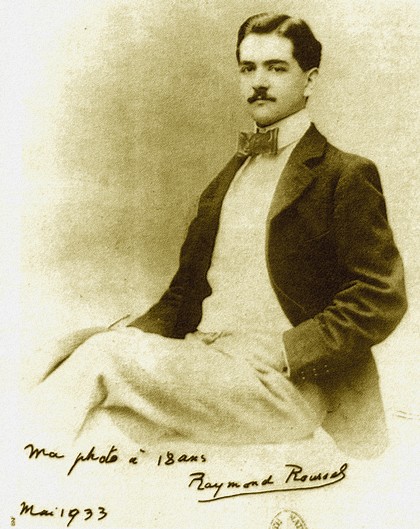'RAYMOND
ROUSSEL
1877 – 1933'
Raymond Roussel's novels and plays were unsuccessful in his lifetime and he died of a massive overdose of barbiturates in Palermo. Only later would he be seen as a precursor, indeed a kind of godfather, of Oulipo.
And his influence continues. I've just noticed that Iain Sinclair mentions the novel The Vorrh by B. Catling as his most significant read of 2013 (TLS 5774, 29 November 2013). The name of this trilogy comes from Roussel's imaginary forest in Impressions d'Afrique (1910), a novel whose second part Roussel said must be read before the first part, as the first part came chronologically after the second.
Below is a link to one of Roussel's most famous novels:
–––––––––––––––––––––––––––––––––––
Raymond Roussel: Locus Solus
Link to my earlier post on Père-Lachaise:
–––––––––––––––––––––––––––––––––––
Le Cimetière du Père-Lachaise / Père Lachaise Cemetery



I wasn't surprised to see Iain Sinclair puffing Brian Catling's book as they are old friends (I was more surprised to hear Brian Catling had written a novel as I thought he was just an artist). I was intrigued by the connection with Roussel and after looking at a couple of reviews of 'The Vorrh' ending up reading it. Roussel is actually a character in the book so the influence is more than just the name. I enjoyed it so thanks for alerting me to it!
ReplyDeleteThanks for that point - interesting that Roussel is a character in the book. I hesitated about buying it, but in the end (but not really justifiably in retrospect) decided against because I just couldn't stand Alan Moore's penultimate paragraph - way too purple!
ReplyDelete